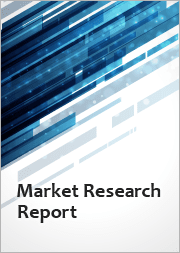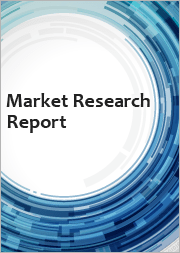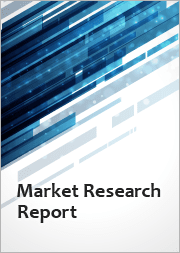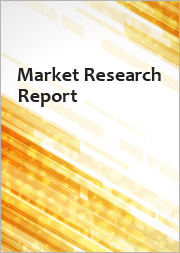
|
시장보고서
상품코드
1754032
생명과학 분야 인공지능(AI) 시장 보고서 : 제공, 전개, 용도, 지역별(2025-2033년)Artificial Intelligence in Life Sciences Market Report by Offering, Deployment, Application, and Region 2025-2033 |
||||||
세계 생명과학 분야 인공지능(AI) 시장 규모는 2024년 29억 달러에 달했습니다. 향후 IMARC Group은 이 시장이 2033년까지 167억 달러에 달할 것으로 예상하며, 2025년부터 2033년까지 21.5%의 연평균 성장률(CAGR)을 기록할 것으로 전망하고 있습니다. 복잡한 질병의 유병률 증가, 의료 영상 분석에서 AI의 채택 증가, 유전체 연구 및 분석에 AI의 통합, AI와 신흥 기술의 융합 등이 시장을 이끄는 주요 요인 중 일부입니다.
생명과학 분야 인공지능(AI) 시장 분석:
- 주요 시장 촉진요인 생명과학 분야 인공지능은 주로 유전체 시퀀스 및 전자 의료 기록에서 얻은 생물의학 데이터의 양이 증가함에 따라 효과적인 관리 및 분석을 위해 강력한 인공지능 도구의 통합이 필요하게 되었습니다. 이에 따라 인공지능은 신약 개발 프로세스를 가속화하고 시간과 비용을 크게 절감하는 데 도움을 주고 있습니다. 또한, 임상 현장에서의 AI 통합에 대한 규제 당국의 지원과 기계 학습 및 계산 알고리즘의 발전은 생명과학 분야 인공지능(AI) 시장 성장을 더욱 촉진하고 있습니다.
- 주요 시장 동향 : 생명과학 분야 인공지능의 주요 시장 동향으로는 클라우드 컴퓨팅 및 사물인터넷(IoT) 장치와 함께 인공지능을 통합하여 데이터 접근성 및 실시간 분석을 더욱 강화하는 것 등이 있습니다. 또한, 질병의 진행과 환자의 결과를 예측하고 임상적 의사결정을 개선하기 위한 AI 기반 예측 모델 개발에도 큰 움직임이 있습니다. 이에 따라 AI 기술 기업과 제약사 간 주로 의약품 개발 및 환자 모니터링에 AI를 활용하기 위한 공동 연구가 증가하고 있습니다. 환자 데이터의 안전과 프라이버시 준수를 보장하기 위해 윤리적 AI와 투명성이 높은 알고리즘에 대한 관심이 높아지고 있는 것도 주목할 만한 추세입니다. 또한, 로보틱 프로세스 자동화(RPA)에 AI를 활용하여 헬스케어의 관리 업무를 간소화하고, 생명과학 분야 인공지능(AI) 시장 성장을 더욱 촉진하고 있습니다.
- 지리적 동향 : 북미가 인공지능 및 생명과학 시장을 선도하고 있으며, 그 주요 요인은 첨단 기술 인프라, 인공지능 및 헬스케어에 대한 막대한 투자, 규제 기관의 강력한 지원으로 분석됩니다. 유럽은 헬스케어 시스템에서의 AI 도입 증가와 AI 연구 및 데이터 보호에 대한 정부 정책의 지원으로 인해 괄목할 만한 성장을 이루며 근소한 차이로 그 뒤를 잇고 있습니다. 아시아태평양은 주로 중국, 일본, 인도 등의 국가에서 헬스케어 수요 증가, 기술 발전, AI를 장려하는 정부의 노력으로 인해 큰 성장세를 보이고 있습니다.
- 경쟁 환경 : 생명과학 분야 인공지능 산업의 주요 시장 기업으로는 AiCure LLC, Apixio Inc. (Centene Corporation), Atomwise Inc, Enlitic Inc., International Business Machines Corporation, Insilico Medicine Inc., Nuance Communications Inc., NuMedii Inc., Sensely Inc. Sophia Genetics SA. 등 다수의 기업이 있습니다.
- 도전과 기회 : 인공지능 및 생명과학 시장은 높은 도입 비용, 숙련된 인공지능 전문가의 필요성, 데이터 프라이버시 및 보안에 대한 우려 증가 등 다양한 도전에 직면해 있습니다. 생물학적 데이터는 복잡하기 때문에 더 정교한 AI 모델이 필요하지만, 그 개발이 어렵습니다. 비즈니스 기회 측면에서 인공지능은 의약품 개발의 효율화, 비용 절감, 개인화된 환자 치료에서 가능성을 보여주고 있습니다. 또한, AI가 헬스케어 서비스 격차를 해소할 수 있는 신흥 시장에도 큰 성장 잠재력이 있습니다.
생명과학 분야 인공지능(AI) 시장 동향과 촉진요인:
신약 발굴 및 개발 가속화
전통적인 의약품 개발 프로세스는 신약 출시까지 10년 이상 소요되는 등 장기적이고 비용이 많이 들고 비효율적인 경우가 많은데, AI는 의약품 개발의 다양한 단계를 가속화하여 이러한 상황을 바꿀 수 있습니다. 예를 들어, 2023년 Cognizant는 샌프란시스코에 첨단 인공지능(AI) 연구소를 설립하여 AI의 핵심 연구, 혁신, 첨단 AI 시스템 개발에 주력하고 있습니다. 전담 AI 연구원 및 개발자 팀을 보유한 이 조사소는 이미 75건의 특허를 출원 및 출원 중이며, 연구기관, 고객, 스타트업과 협력하고 있습니다. 머신러닝 알고리즘은 생물학적 및 화학적 정보, 임상시험 데이터, 기존 의약품 데이터베이스 등 방대한 데이터세트를 분석하여 전례 없는 속도와 정확도로 잠재적 의약품 후보물질을 식별합니다. 이를 통해 연구자들은 유망한 화합물을 식별하고, 효능을 예측하고, 특성을 최적화하여 신약개발에 필요한 시간과 비용을 크게 절감할 수 있어 생명과학 분야 인공지능(AI) 시장 성장을 촉진할 수 있습니다.
맞춤형 의료와 헬스케어
AI는 빅데이터와 머신러닝의 힘을 활용하여 개인의 유전적 체질, 임상 이력, 생활습관, 실시간 건강 데이터를 분석하여 고도로 맞춤화된 치료 계획을 수립할 수 있는 AI 기반 플랫폼 PhenOM을 발표했습니다. 2023년 OM1은 풍부한 헬스케어 데이터세트와 AI 기술을 활용하여 맞춤형 의료를 위한 AI 기반 플랫폼인 PhenOM을 발표했으며, PhenOM은 종단적 건강 이력 데이터로 보정된 질병 관련 고유한 디지털 표현형을 식별하고, 질병과 관련된 질병과 관련된 고유한 디지털 표현형을 식별하고, 개인화된 헬스케어에 대한 인사이트를 대규모로 제공합니다. 만성질환에 초점을 맞춘 OM1은 혁신적인 RWE 연구의 선구자로서 환자 결과에 개인화된 영향을 제공하고 최첨단 AI 솔루션을 통해 의료를 발전시키는 데 앞장서고 있습니다. 이러한 수준의 개인화를 통해 환자는 보다 효과적이고 부작용이 적은 치료를 받을 수 있습니다. 또한 AI 기반 예측 모델은 특정 질병의 위험이 높은 환자를 식별하여 조기 개입 및 예방 조치를 취할 수 있도록 돕습니다. 또한 종양학에서 AI는 환자의 암을 유발하는 특정 유전자 변이를 정확히 찾아내어 종양 전문의가 성공 가능성이 높은 표적 치료법을 추천할 수 있도록 돕습니다.
질병 진단 및 바이오마커 발견
AI 알고리즘은 엑스레이, MRI, CT 스캔과 같은 의료 영상, 환자의 전자 의료 기록, 유전체 프로파일 등 다양한 의료 데이터 소스를 탁월한 정확도와 효율성으로 분석할 수 있습니다. 방사선과에서 AI를 활용한 영상 분석은 방사선과 의사가 미묘한 이상 징후를 감지하고 잠재적인 건강 문제를 발견하여 조기 진단 및 치료에 도움을 줄 수 있습니다. 방사선과 의사의 시간을 절약하고, 소진을 줄이고, 환자 치료의 질을 향상시키는 것을 목표로 하고 있습니다. 이번 제휴를 통해 워크플로우를 간소화하고 반복적인 작업을 자동화하여 영상의학과 보고의 효율성과 정확성을 향상시킬 수 있습니다. 또한, AI는 질병의 바이오마커를 발견하는 데에도 도움이 됩니다. 바이오마커는 질병을 조기에 발견하고 그 진행을 모니터링하는 데 매우 중요합니다. 머신러닝 모델은 분자 데이터의 미묘한 패턴을 감지할 수 있으며, 암, 알츠하이머병, 심혈관질환 등 다양한 질병과 관련된 특정 바이오마커를 식별하는 데 도움이 됩니다. 이러한 바이오마커는 조기 경고 신호로 작용하여 임상의가 환자 치료에 대해 적시에 정보에 입각한 결정을 내릴 수 있도록 도와줍니다.
목차
제1장 서문
제2장 조사 범위와 조사 방법
- 조사 목적
- 이해관계자
- 데이터 소스
- 1차 정보
- 2차 정보
- 시장 추정
- 상향식 접근
- 하향식 접근
- 조사 방법
제3장 주요 요약
제4장 소개
- 개요
- 주요 업계 동향
제5장 세계의 생명과학 분야 인공지능(AI) 시장
- 시장 개요
- 시장 실적
- COVID-19의 영향
- 시장 예측
제6장 시장 내역 : 제공별
- 소프트웨어
- 하드웨어
- 서비스
제7장 시장 내역 : 전개별
- 온프레미스
- 클라우드 기반
제8장 시장 내역 : 용도별
- Drug Discovery
- 의료 진단
- 바이오테크놀러지
- 임상시험
- 정밀의료와 맞춤형 의료
- 환자 모니터링
제9장 시장 내역 : 지역별
- 북미
- 미국
- 캐나다
- 아시아태평양
- 중국
- 일본
- 인도
- 한국
- 호주
- 인도네시아
- 기타
- 유럽
- 독일
- 프랑스
- 영국
- 이탈리아
- 스페인
- 러시아
- 기타
- 라틴아메리카
- 브라질
- 멕시코
- 기타
- 중동 및 아프리카
- 시장 내역 : 국가별
제10장 SWOT 분석
- 개요
- 강점
- 약점
- 기회
- 위협
제11장 밸류체인 분석
제12장 Porter's Five Forces 분석
- 개요
- 구매자의 교섭력
- 공급 기업의 교섭력
- 경쟁 정도
- 신규 참여업체의 위협
- 대체품의 위협
제13장 가격 분석
제14장 경쟁 구도
- 시장 구조
- 주요 기업
- 주요 기업 개요
- AiCure LLC
- Apixio Inc.(Centene Corporation)
- Atomwise Inc
- Enlitic Inc.
- International Business Machines Corporation
- Insilico Medicine Inc.
- Nuance Communications Inc.
- NuMedii Inc.
- Sensely Inc.
- Sophia Genetics SA
The global artificial intelligence in life sciences market size reached USD 2.9 Billion in 2024. Looking forward, IMARC Group expects the market to reach USD 16.7 Billion by 2033, exhibiting a growth rate (CAGR) of 21.5% during 2025-2033. The rising prevalence of complex diseases, the increasing adoption of AI in medical imaging analysis, the integration of AI into genomics research and analysis, and the convergence of AI with emerging technologies are some of the major factors propelling the market.
Artificial Intelligence in Life Sciences Market Analysis:
- Major Market Drivers: Artificial intelligence in life sciences is mainly driven by the increase in the volume of biomedical data from genomic sequences and electronic health records which necessitates the incorporation of powerful AI tools for effective management and analysis. In line with this, artificial intelligence is instrumental in accelerating drug discovery and development processes thereby significantly reducing time and costs. Moreover, regulatory support for AI integration in clinical settings and advancements in machine learning and computational algorithms further propel artificial intelligence in life sciences market growth.
- Key Market Trends: Key market trends in artificial intelligence in the life sciences sector include the integration of artificial intelligence along with cloud computing and Internet of Things (IoT) devices further enhancing data accessibility and real-time analysis. There is also a significant trend toward the development of AI-driven predictive models that forecast disease progression and patient outcomes improving clinical decision-making. In line with this, collaborative efforts between AI tech firms and pharmaceutical companies are on the rise mainly aimed at leveraging AI for drug development and patient monitoring. The growing focus on ethical AI and transparent algorithms to ensure patient data security and privacy compliance is another notable trend. Furthermore, the use of AI in robotic process automation (RPA) is a streamlining administrative task in healthcare further driving artificial intelligence in life sciences market growth.
- Geographical Trends: Geographically, North America leads the artificial intelligence and life sciences market mainly driven by its advanced technological infrastructure, substantial investment in artificial intelligence and healthcare, and strong support from regulatory bodies. Europe follows closely, with significant growth because of the increase in the adoption of AI in healthcare systems and support from government policies regarding AI research and data protection. Asia Pacific is experiencing significant growth mainly fueled by increasing healthcare demands, technological advancements, and government initiatives to promote AI in countries like China, Japan, and India.
- Competitive Landscape: Some of the major market players in the artificial intelligence in life sciences industry include AiCure LLC, Apixio Inc. (Centene Corporation), Atomwise Inc, Enlitic Inc., International Business Machines Corporation, Insilico Medicine Inc., Nuance Communications Inc., NuMedii Inc., Sensely Inc. Sophia Genetics SA., among many others.
- Challenges and Opportunities: The artificial intelligence and life sciences market faces various challenges, which include high implementation costs, a need for more skilled artificial intelligence professionals, and growing concerns over data privacy and security. The complexity of biological data requires more sophisticated AI models, which can be difficult to develop. On the opportunity side, artificial intelligence shows potential in improving drug development efficiency, reducing costs, and in personalized patient care. Furthermore, there is also significant potential for growth in emerging markets where AI can address the gaps in healthcare services.
Artificial Intelligence in Life Sciences Market Trends/Drivers:
Drug Discovery and Development Acceleration
The traditional drug development process is a lengthy, costly, and often inefficient endeavour, taking over a decade to bring a new drug into the market. AI transforms this landscape by expediting various stages of drug development. For instance, in 2023, Cognizant launched an Advanced Artificial Intelligence (AI) Lab in San Francisco to mainly focus on core AI research, innovation, and development of cutting-edge AI systems. The lab, staffed by a team of dedicated AI researchers and developers, has already produced 75 issued and pending patents and will collaborate with research institutions, customers, and startups. Machine learning algorithms analyse vast datasets, including biological and chemical information, clinical trial data, and existing drug databases, to identify potential drug candidates with unprecedented speed and accuracy. This enables researchers to pinpoint promising compounds, predict their efficacy, and optimize their properties, significantly reducing the time and cost required for drug discovery, thereby propelling the artificial intelligence in life sciences market growth.
Personalized Medicine and Healthcare
Traditional medical treatments often follow a one-size-fits-all approach, with medications and therapies prescribed based on broad population averages. AI harnesses the power of big data and machine learning to analyze an individual's genetic makeup, clinical history, lifestyle factors, and real-time health data to develop highly tailored treatment plans. In 2023, OM1 introduced PhenOM, an AI-powered platform for personalized medicine, leveraging enriched healthcare datasets and AI technology. Calibrated using longitudinal health history data, PhenOM identifies unique digital phenotypes associated with conditions, enabling personalized healthcare insights at scale. With a focus on chronic conditions, OM1 pioneers innovative RWE research, delivering personalized impact on patient outcomes and advancing healthcare through cutting-edge AI solutions.This level of personalization ensures that patients receive treatments that are not only more effective but also less likely to cause adverse side effects. Also, AI-driven predictive models can help identify patients at higher risk of certain diseases, allowing for early intervention and preventive measures. Additionally, in oncology, AI assists in pinpointing the specific genetic mutations driving a patient's cancer, enabling oncologists to recommend targeted therapies that are more likely to be successful.
Disease Diagnosis and Biomarker Discovery
AI algorithms can analyze diverse medical data sources, including medical images, such as X-rays, MRIs, and CT scans, patient electronic health records, and genomic profiles, with exceptional accuracy and efficiency. In radiology, AI-powered image analysis can assist radiologists in detecting subtle abnormalities and flagging potential health issues, aiding in early diagnosis and treatment. In 2024, Rad AI has partnered with Google to enhance radiology reporting by leveraging AI technology, aiming to save radiologists time, reduce burnout, and improve patient care quality. This collaboration will streamline workflows, automate repetitive tasks, and advance the efficiency and accuracy of radiology reporting. Moreover, AI is instrumental in the discovery of disease biomarkers, which are crucial in identifying diseases at their earliest stages and monitoring their progression. Machine learning models can detect subtle patterns in molecular data, helping to identify specific biomarkers associated with various diseases, including cancer, Alzheimer's, and cardiovascular conditions. These biomarkers serve as early warning signs and can guide clinicians in making timely and informed decisions about patient care.
Artificial Intelligence in Life Sciences Industry Segmentation:
Breakup by Offering:
- Software
- Hardware
- Services
Software dominates the market
Software in the context of AI encompasses a wide array of tools, platforms, and applications specifically designed to process, analyze, and interpret the immense volume of data generated in life sciences research. These software solutions utilize machine learning algorithms, natural language processing, deep learning, and other AI techniques to sift through complex biological datasets, making sense of genomics, proteomics, and clinical data. The versatility of AI software allows researchers to explore various aspects of drug discovery, disease diagnosis, and patient care with unprecedented precision and efficiency. Additionally, the scalability and adaptability of AI software make it a preferred choice for organizations operating in the life sciences domain. Researchers can customize and fine-tune AI algorithms to meet their specific research needs, whether it involves drug target identification, biomarker discovery, or patient stratification for clinical trials. This flexibility empowers scientists to adapt to evolving research objectives and swiftly respond to emerging challenges in healthcare and life sciences. Furthermore, AI software offerings are at the forefront of addressing some of the most pressing issues in the industry.
Breakup by Deployment:
- On-premises
- Cloud-based
Cloud-based dominate the market
Cloud-based deployment offers unparalleled scalability and flexibility, which are crucial for the resource-intensive nature of AI applications in life sciences. Researchers and organizations can tap into cloud resources as needed, scaling up or down depending on the complexity and volume of data being processed. This dynamic scalability ensures that computational resources are optimally allocated, avoiding underutilization or resource bottlenecks, which can occur with on-premises solutions. Additionally, cloud-based deployment eliminates the need for significant upfront hardware and infrastructure investments. This cost-effectiveness is particularly attractive for research institutions, pharmaceutical companies, and healthcare providers looking to leverage AI without the burden of substantial capital expenditures. Cloud services provide pay-as-you-go pricing models, allowing organizations to pay only for the computing resources they consume, thus optimizing cost management. Moreover, cloud-based deployments offer the advantage of accessibility and collaboration. Researchers and scientists can access AI tools and applications from anywhere with an internet connection, facilitating collaboration across geographic boundaries and enabling real-time data sharing and analysis.
Breakup by Application:
- Drug Discovery
- Medical Diagnosis
- Biotechnology
- Clinical Trials
- Precision and Personalized Medicine
- Patient Monitoring
Drug discovery dominates the market
AI-driven drug discovery is not limited to target identification alone. AI models can predict the pharmacokinetics and toxicity profiles of potential drugs, allowing researchers to assess their safety and efficacy earlier in the development pipeline. This risk mitigation not only saves time but also reduces the likelihood of costly late-stage failures, a common challenge in the pharmaceutical industry. Additionally, AI plays a pivotal role in drug repurposing, where existing drugs are explored for new therapeutic applications. By analyzing biological data, AI algorithms can identify overlooked connections between drugs and diseases, potentially unveiling novel treatment options. This approach not only accelerates the availability of treatments for various medical conditions but also leverages existing knowledge and resources more efficiently. Furthermore, the personalized medicine revolution is closely linked to AI-driven drug discovery. As AI models analyze patients' genetic profiles, clinical histories, and real-time health data, they can identify specific genetic markers and mutations that influence drug response.
Breakup by Region:
- North America
- United States
- Canada
- Asia Pacific
- China
- Japan
- India
- South Korea
- Australia
- Indonesia
- Others
- Europe
- Germany
- France
- United Kingdom
- Italy
- Spain
- Russia
- Others
- Latin America
- Brazil
- Mexico
- Others
- Middle East and Africa
North America exhibits a clear dominance, accounting for the largest artificial intelligence in life sciences market share
The market research report has also provided a comprehensive analysis of all the major regional markets, which include North America (the United States and Canada); Asia Pacific (China, Japan, India, South Korea, Australia, Indonesia, and others); Europe (Germany, France, the United Kingdom, Italy, Spain, Russia, and others); Latin America (Brazil, Mexico, and others); and the Middle East and Africa. According to the report, North America accounted for the largest market share.
North America boasts significant investments in AI research and development. Government initiatives, private sector funding, and venture capital investments have poured into AI projects and startups, fueling innovation and technological advancements. This financial backing has accelerated the growth of AI-driven solutions, from drug discovery and genomics to healthcare analytics and personalized medicine. Moreover, North America's robust regulatory framework and intellectual property protection create a conducive environment for AI development and commercialization. Several regulatory agencies have been proactive in engaging with AI developers to establish clear guidelines and approval processes for AI-based medical devices and treatments. This regulatory clarity gives businesses confidence to invest in AI projects. Furthermore, North America's healthcare infrastructure is among the most advanced globally, making it a prime testing ground for AI applications. The region's large patient population, extensive electronic health record systems, and well-established pharmaceutical and biotech industries provide ample opportunities for AI-driven healthcare solutions to demonstrate their efficacy and impact.
Competitive Landscape:
Numerous companies in this market are focused on using AI to accelerate drug discovery processes. They develop AI algorithms and platforms that analyze biological data, identify potential drug candidates, predict drug interactions, and optimize drug design, all with the goal of bringing new therapies to market faster and more efficiently. Also, AI companies in the life sciences sector work on solutions for genomic analysis. They develop tools that can decipher and interpret genetic information, identify disease markers, predict disease risk, and enable personalized medicine by tailoring treatments based on an individual's genetic profile. Moreover, companies are developing AI-driven solutions that assist radiologists and pathologists in interpreting medical images such as X-rays, MRIs, and CT scans. These tools can help detect diseases and anomalies earlier and with greater accuracy. Companies are also actively engaged in predictive analytics, utilizing AI to identify disease biomarkers, predict patient outcomes, and stratify patients for clinical trials. These AI-driven insights can inform treatment decisions and improve patient care.
The report has provided a comprehensive analysis of the competitive landscape in the market. Detailed profiles of all major companies have also been provided. Some of the key players in the market include:
- AiCure LLC
- Apixio Inc. (Centene Corporation)
- Atomwise Inc
- Enlitic Inc.
- International Business Machines Corporation
- Insilico Medicine Inc.
- Nuance Communications Inc.
- NuMedii Inc.
- Sensely Inc.
- Sophia Genetics SA
Key Questions Answered in This Report
- 1.How big is the artificial intelligence in life sciences market?
- 2.What is the expected growth rate of the global artificial intelligence in life sciences market during 2025-2033?
- 3.What are the key factors driving the global artificial intelligence in life sciences market?
- 4.What has been the impact of COVID-19 on the global artificial intelligence in life sciences market?
- 5.What is the breakup of the global artificial intelligence in life sciences market based on the offering?
- 6.What is the breakup of the global artificial intelligence in life sciences market based on the deployment?
- 7.What is the breakup of the global artificial intelligence in life sciences market based on the application?
- 8.What are the key regions in the global artificial intelligence in life sciences market?
- 9.Who are the key players/companies in the global artificial intelligence in life sciences market?
Table of Contents
1 Preface
2 Scope and Methodology
- 2.1 Objectives of the Study
- 2.2 Stakeholders
- 2.3 Data Sources
- 2.3.1 Primary Sources
- 2.3.2 Secondary Sources
- 2.4 Market Estimation
- 2.4.1 Bottom-Up Approach
- 2.4.2 Top-Down Approach
- 2.5 Forecasting Methodology
3 Executive Summary
4 Introduction
- 4.1 Overview
- 4.2 Key Industry Trends
5 Global Artificial Intelligence In Life Sciences Market
- 5.1 Market Overview
- 5.2 Market Performance
- 5.3 Impact of COVID-19
- 5.4 Market Forecast
6 Market Breakup by Offering
- 6.1 Software
- 6.1.1 Market Trends
- 6.1.2 Market Forecast
- 6.2 Hardware
- 6.2.1 Market Trends
- 6.2.2 Market Forecast
- 6.3 Services
- 6.3.1 Market Trends
- 6.3.2 Market Forecast
7 Market Breakup by Deployment
- 7.1 On-premises
- 7.1.1 Market Trends
- 7.1.2 Market Forecast
- 7.2 Cloud-based
- 7.2.1 Market Trends
- 7.2.2 Market Forecast
8 Market Breakup by Application
- 8.1 Drug Discovery
- 8.1.1 Market Trends
- 8.1.2 Market Forecast
- 8.2 Medical Diagnosis
- 8.2.1 Market Trends
- 8.2.2 Market Forecast
- 8.3 Biotechnology
- 8.3.1 Market Trends
- 8.3.2 Market Forecast
- 8.4 Clinical Trials
- 8.4.1 Market Trends
- 8.4.2 Market Forecast
- 8.5 Precision and Personalized Medicine
- 8.5.1 Market Trends
- 8.5.2 Market Forecast
- 8.6 Patient Monitoring
- 8.6.1 Market Trends
- 8.6.2 Market Forecast
9 Market Breakup by Region
- 9.1 North America
- 9.1.1 United States
- 9.1.1.1 Market Trends
- 9.1.1.2 Market Forecast
- 9.1.2 Canada
- 9.1.2.1 Market Trends
- 9.1.2.2 Market Forecast
- 9.1.1 United States
- 9.2 Asia-Pacific
- 9.2.1 China
- 9.2.1.1 Market Trends
- 9.2.1.2 Market Forecast
- 9.2.2 Japan
- 9.2.2.1 Market Trends
- 9.2.2.2 Market Forecast
- 9.2.3 India
- 9.2.3.1 Market Trends
- 9.2.3.2 Market Forecast
- 9.2.4 South Korea
- 9.2.4.1 Market Trends
- 9.2.4.2 Market Forecast
- 9.2.5 Australia
- 9.2.5.1 Market Trends
- 9.2.5.2 Market Forecast
- 9.2.6 Indonesia
- 9.2.6.1 Market Trends
- 9.2.6.2 Market Forecast
- 9.2.7 Others
- 9.2.7.1 Market Trends
- 9.2.7.2 Market Forecast
- 9.2.1 China
- 9.3 Europe
- 9.3.1 Germany
- 9.3.1.1 Market Trends
- 9.3.1.2 Market Forecast
- 9.3.2 France
- 9.3.2.1 Market Trends
- 9.3.2.2 Market Forecast
- 9.3.3 United Kingdom
- 9.3.3.1 Market Trends
- 9.3.3.2 Market Forecast
- 9.3.4 Italy
- 9.3.4.1 Market Trends
- 9.3.4.2 Market Forecast
- 9.3.5 Spain
- 9.3.5.1 Market Trends
- 9.3.5.2 Market Forecast
- 9.3.6 Russia
- 9.3.6.1 Market Trends
- 9.3.6.2 Market Forecast
- 9.3.7 Others
- 9.3.7.1 Market Trends
- 9.3.7.2 Market Forecast
- 9.3.1 Germany
- 9.4 Latin America
- 9.4.1 Brazil
- 9.4.1.1 Market Trends
- 9.4.1.2 Market Forecast
- 9.4.2 Mexico
- 9.4.2.1 Market Trends
- 9.4.2.2 Market Forecast
- 9.4.3 Others
- 9.4.3.1 Market Trends
- 9.4.3.2 Market Forecast
- 9.4.1 Brazil
- 9.5 Middle East and Africa
- 9.5.1 Market Trends
- 9.5.2 Market Breakup by Country
- 9.5.3 Market Forecast
10 SWOT Analysis
- 10.1 Overview
- 10.2 Strengths
- 10.3 Weaknesses
- 10.4 Opportunities
- 10.5 Threats
11 Value Chain Analysis
12 Porters Five Forces Analysis
- 12.1 Overview
- 12.2 Bargaining Power of Buyers
- 12.3 Bargaining Power of Suppliers
- 12.4 Degree of Competition
- 12.5 Threat of New Entrants
- 12.6 Threat of Substitutes
13 Price Analysis
14 Competitive Landscape
- 14.1 Market Structure
- 14.2 Key Players
- 14.3 Profiles of Key Players
- 14.3.1 AiCure LLC
- 14.3.1.1 Company Overview
- 14.3.1.2 Product Portfolio
- 14.3.2 Apixio Inc. (Centene Corporation)
- 14.3.2.1 Company Overview
- 14.3.2.2 Product Portfolio
- 14.3.3 Atomwise Inc
- 14.3.3.1 Company Overview
- 14.3.3.2 Product Portfolio
- 14.3.4 Enlitic Inc.
- 14.3.4.1 Company Overview
- 14.3.4.2 Product Portfolio
- 14.3.5 International Business Machines Corporation
- 14.3.5.1 Company Overview
- 14.3.5.2 Product Portfolio
- 14.3.5.3 Financials
- 14.3.5.4 SWOT Analysis
- 14.3.6 Insilico Medicine Inc.
- 14.3.6.1 Company Overview
- 14.3.6.2 Product Portfolio
- 14.3.7 Nuance Communications Inc.
- 14.3.7.1 Company Overview
- 14.3.7.2 Product Portfolio
- 14.3.7.3 SWOT Analysis
- 14.3.8 NuMedii Inc.
- 14.3.8.1 Company Overview
- 14.3.8.2 Product Portfolio
- 14.3.9 Sensely Inc.
- 14.3.9.1 Company Overview
- 14.3.9.2 Product Portfolio
- 14.3.10 Sophia Genetics SA
- 14.3.10.1 Company Overview
- 14.3.10.2 Product Portfolio
- 14.3.10.3 Financials
- 14.3.1 AiCure LLC






